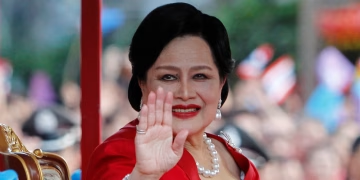When the Taliban took power in Afghanistan in August 2021, Pakistan was among the few countries that quietly celebrated. Islamabad had long been accused of maintaining links with the Taliban during the two-decade U.S. war in Afghanistan, and it expected the new government in Kabul to be friendly, cooperative, and strategically aligned with its interests. Pakistan’s leadership believed the Taliban’s rise would help stabilize the region, contain cross-border militancy, and ensure that Afghanistan would not become a base for hostile groups targeting Pakistan.
However, those hopes have since faded. In the years following the Taliban takeover, relations between the two neighbors have sharply deteriorated. What was once expected to be a close and coordinated relationship has become one of mutual suspicion and repeated confrontations. The optimism of 2021 has been replaced by military skirmishes, diplomatic accusations, and economic disruption.
TTP: The Core of the Crisis
The single most important source of tension between Pakistan and the Taliban government is the Tehreek-e-Taliban Pakistan (TTP) — a militant group ideologically aligned with the Afghan Taliban but focused on fighting the Pakistani state. Islamabad blames the TTP for a surge in terrorist attacks that have killed hundreds, including many members of Pakistan’s security forces.
The TTP’s leadership and fighters are believed to be operating from sanctuaries inside Afghanistan. Pakistan expected the Taliban to curb their activities and deny them safe haven. But that expectation has not been met. Analysts suggest that while the Taliban has made public statements about preventing Afghan soil from being used against others, its actual enforcement has been minimal.
Part of the reason lies in ideological and historical ties. The Afghan Taliban and TTP share roots in the same militant networks that fought against U.S. and NATO forces. Many TTP fighters once lived, trained, or fought alongside Afghan Taliban members. This makes it politically and socially difficult for the Taliban leadership to act harshly against them. For the Taliban, cracking down on the TTP could risk alienating factions within its own ranks who view the TTP as “brothers in arms.”
Ideology and Mismatch in Expectations
From Islamabad’s perspective, the Taliban was supposed to serve as a cooperative neighbor willing to collaborate on border control and counterterrorism. Instead, what Pakistan found was an ideologically rigid government with its own agenda.
The Taliban seeks legitimacy and recognition as an independent Islamic government. It resists what it sees as external interference — even from a country that once offered it political support. Pakistan, accustomed to having leverage in Kabul’s affairs, now finds itself dealing with a fiercely nationalistic regime unwilling to take orders or even advice.
This mismatch in expectations has been one of the biggest shocks for Pakistani policymakers. Islamabad wanted the Taliban to act as a stabilizing ally. Instead, it now faces an emboldened neighbor that not only defends its sovereignty but occasionally accuses Pakistan of violating it.
Border Clashes and Sovereignty Disputes
The 2,600-kilometer Pakistan–Afghanistan border — known as the Durand Line — has long been contentious. The Taliban, like previous Afghan governments, refuses to formally recognize it as an international border. In recent months, tensions have escalated dramatically along these frontiers.
Cross-border firing, Pakistani airstrikes into Afghan territory, and retaliatory attacks by Afghan border guards have become frequent. Pakistan says these actions are necessary to defend against militant incursions, while the Taliban calls them violations of its sovereignty.
Major border crossings, such as Torkham and Chaman, have been repeatedly closed, disrupting trade and stranding thousands of truck drivers and traders. These closures not only hurt both economies but also inflame nationalist sentiment in Afghanistan, where Pakistan is often portrayed as a bully.
Domestic Pressures on Both Sides
Domestic politics further complicate any chance of reconciliation.
In Pakistan, the civilian government and the powerful military face growing public anger over deteriorating security and a weak economy. Each militant attack attributed to the TTP increases pressure on Islamabad to act decisively. Any sign of leniency toward the Taliban risks being viewed as weakness.
Meanwhile, in Afghanistan, the Taliban leadership faces internal challenges of its own. The movement is divided between hardliners who want to maintain strict ideological control and pragmatists who favor diplomatic engagement. Taking strong action against the TTP could spark dissent within the movement and erode its fragile unity.
Thus, both sides are politically constrained — one by domestic insecurity and the other by ideological loyalty.
Economic Dependence and Fragility
Despite the hostility, both countries are economically interdependent. Afghanistan relies heavily on Pakistan for trade routes, access to seaports, and transit of goods. Pakistan, in turn, depends on Afghan trade for economic activity in its border provinces and for regional connectivity.
However, repeated border closures, increased tariffs, and growing mistrust have hurt cross-border commerce. Traders and transporters have suffered losses, and border communities have seen livelihoods disrupted. These economic costs create an incentive for dialogue, yet the lingering mistrust prevents meaningful progress.
The Taliban’s economic fragility adds to the problem. Afghanistan remains under international sanctions, lacks foreign recognition, and faces a deep humanitarian crisis. Every border closure or disruption of trade further weakens its already fragile economy.
External Players and Regional Rivalries
Adding to the tension are the regional dynamics involving other powers. India, China, Iran, and the Gulf states all have stakes in Afghanistan’s stability. Pakistan has long feared Indian influence in Kabul, while the Taliban seeks to balance relations with multiple countries to avoid overdependence on any single power.
This balancing act often frustrates Pakistan, which had expected to be Afghanistan’s primary partner. Now, Taliban officials meet with delegations from India, China, and even Western humanitarian groups — signaling a more independent foreign policy.
External mediation, especially by Qatar or Saudi Arabia, could potentially help, but such involvement brings its own complications. Every outside actor comes with its interests and biases, which can limit the effectiveness of mediation efforts.
Barriers to Reconciliation
Several structural and political obstacles make reconciliation extremely difficult:
- Deep mistrust rooted in decades of covert interference and broken promises.
- Ideological alignment between the Taliban and TTP that discourages firm action.
- Sovereignty disputes that make Pakistan’s security demands unacceptable to Kabul.
- Weak enforcement mechanisms — ceasefires and pledges often collapse within weeks.
- Political and military duality in Pakistan’s power structure, which sometimes sends mixed signals to the Taliban.
Recent Escalations
Recent events underscore how fragile the situation has become. After deadly border clashes earlier this year, both sides announced a short 48-hour ceasefire, but border crossings remained shut. Pakistani airstrikes reportedly killed civilians in southern Afghanistan, prompting strong condemnation from the Taliban. Afghan officials retaliated by closing trade routes, halting fuel and food supplies, and summoning Pakistani diplomats.
Each incident adds new layers of bitterness, and every negotiation begins from a position of greater mistrust.
The Road Ahead
“Patching up” between Pakistan and the Taliban is possible, but it will be a slow and messy process. Real progress requires several key steps:
- Clear, verifiable commitments from the Taliban to prevent cross-border militant attacks.
- Respect for sovereignty from Pakistan, including restraint from unilateral airstrikes.
- Economic cooperation through consistent trade and transit agreements.
- Confidence-building measures such as prisoner swaps, border patrol coordination, and third-party monitoring.
But even with these steps, political will remains uncertain. The cost of compromise is high for both sides: for the Taliban, it risks internal rebellion; for Pakistan, it risks domestic backlash.
For now, the relationship is likely to oscillate between uneasy truces and renewed flare-ups. Until both governments recognize that stability serves their mutual interests more than rivalry does, the cycle of suspicion, retaliation, and fragile ceasefires will persist.












